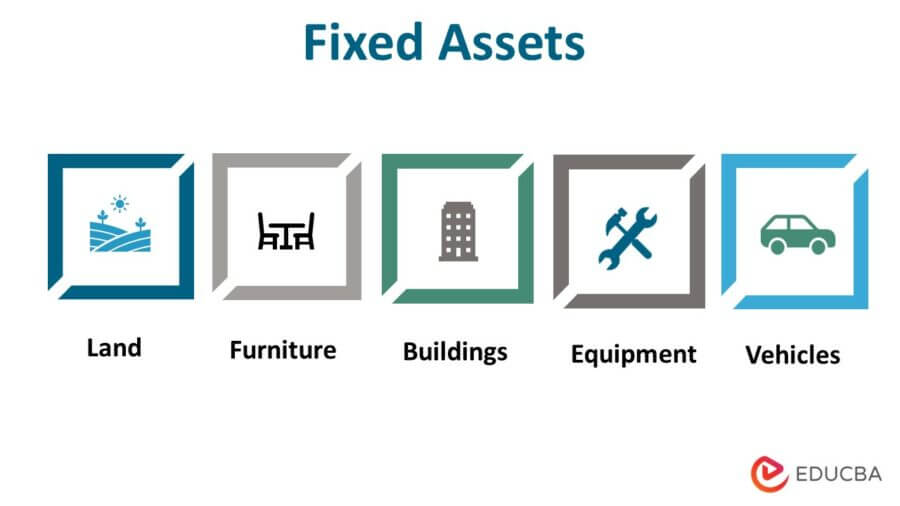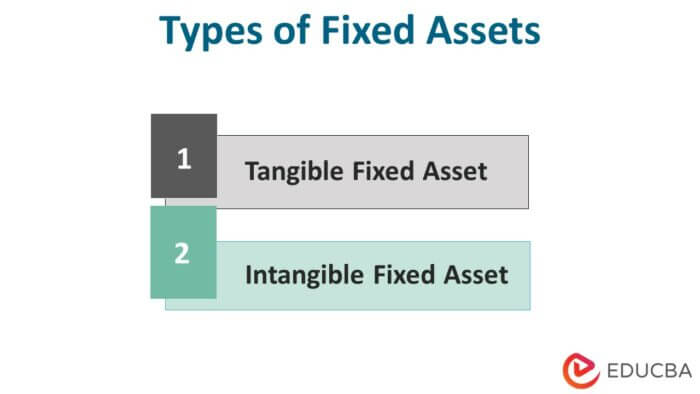
Introduction to Fixed Assets
Fixed Assets are tangible assets purchased for long-term use. An asset is said to be a fixed asset when the holding period of the asset is more than a year.
Companies buy fixed assets in order to extract value from them for daily operations or to generate steady cash flow. Fixed Assets are shown on the Asset side of the balance sheet. They depreciate as per the usable life of the asset and each year the depreciation cost is adjusted from the Book Value of the asset. An asset that is bought to be resold can’t be termed a fixed asset. If the asset is bought to be used for the business, then only it can be categorized as a fixed asset.
Characteristics of Fixed Assets
- Fixed Assets are bought to help the operation for more than a year. So the life of any fixed asset should be more than 1 year.
- Liquid Assets are those which can be converted to cash very easily. In the case of fixed assets, the capability of getting sold fast and converted to cash is not so easy. So they are mostly illiquid and it takes time for companies to sell or replace them.
- Depreciation is charged on F.A. Each year a certain percentage is written off the books. As fixed assets are used in day-to-day operations, their capacity gradually decreases, and ultimately, the asset becomes useless. To manage this process efficiently, companies often rely on fixed asset depreciation software to calculate and track periodic depreciation accurately.
- Fixed assets are always used from a long term perspective. They are bought for operations that range for more than a year. So the gain that is generated from the fixed asset is also for more than a year. Recurring long term gain is also a characteristic of the fixed asset.
Formula for Fixed Assets
The formula for fixed assets is given below:
Every Asset has a depreciable life. Every year depreciation is charged on the book value to get the Net Fixed Asset.
How Does it Work?
All the tangible F.A that a company purchases are shown under property, plant, and equipment in the Asset side of the balance sheet. Individual depreciations of the assets are clubbed under a single “Accumulated Depreciation” head and are deducted from the book value of the total property, plant, and equipment.
Example of Fixed Assets
Company XYZ bought land, furniture, machinery, fixtures, computers, etc. in order to start operation. All the assets are purchased in order to generate value for the long term. These are F.A for the company. When the balance sheet will be prepared, the assets will be clubbed under a single head which is “Property, plant, and equipment” and will be shown under the asset side of the balance sheet.
Types of Fixed Assets
They are mainly of two types:
- Tangible Fixed Asset: These are assets that you can touch and feel. Machinery, building, furniture, etc., can be touched and felt. These assets are needed to maintain the day to day operation of a business.
- Intangible Fixed Asset: Intangible F.A can’t be touched or felt. They are used to generate value for the business. Patents help to generate value for the business but they can’t be touched. They are purchased for long term use.
Depreciation of Fixed Asset
It is depreciated as per the useful life of the asset. Once a machine is purchased and it starts to operate, then the machine starts to lose its value. So depreciation is recorded every year in order to show the correct value of assets in the books.
Depreciation can be a “Straight Line or “Written down Value” basis. If the depreciation of the asset will be equal throughout life, then the “Straight Line” method is used.
When an asset depreciates more in the initial year, then a different approach called “Written down Value” is used. In this method, a fixed or descending percentage of depreciation is applied to the carrying value of the asset.
Accounting for Fixed Assets
It can be accounted for in a balance sheet based on Cost or Fair Value. There are two models for it.
- Cost Model: Here the Fixed Assets will be shown in the balance sheet based on the cost incurred to purchase them. Depreciation is adjusted yearly and the Net Fixed Asset is shown after the end of the Accounting year.
- Revaluation Model: Under the revaluation model the assets are shown at their “Fair value”. Fair Value is the value at which an informed buyer and seller are ready to exchange goods. As the Fair value of the asset keeps on changing, the adjustments are done accordingly in the balance sheet and contra entries affect either the Profit and Loss Statement or Equity.
Difference Between Fixed Assets and Current Assets
Fixed Assets are purchased by companies in order to be used for more than a year. On the other hand, current assets are short term assets that are meant to be used within a year. Inventory, cash, etc. are current assets that are used by firms in order to meet short term obligations.
Advantages of Fixed assets
- It helps companies to survive in the long run. Financial benefits from fixed assets are enjoyed by companies for a long period of time.
- The quality of fixed asset of concern help to understand the financial position of the company. If the asset base of a company is strong, then the future profitability of the company will be high as a financial benefit can be extracted from it.
- It also helps to increase the value of the company during the liquidation process. The higher the value the higher will be the liquidation value of the company.
Conclusion
Fixed Assets are very important for a company and should be used economically in order to extract maximum value from them. Proper accounting is very important in order to understand the financial position of the company.
Recommended Articles
This is a guide to Fixed Assets. Here we discuss the definition and characteristics of fixed assets along with their advantages and types. You may also have a look at the following articles to learn more –



